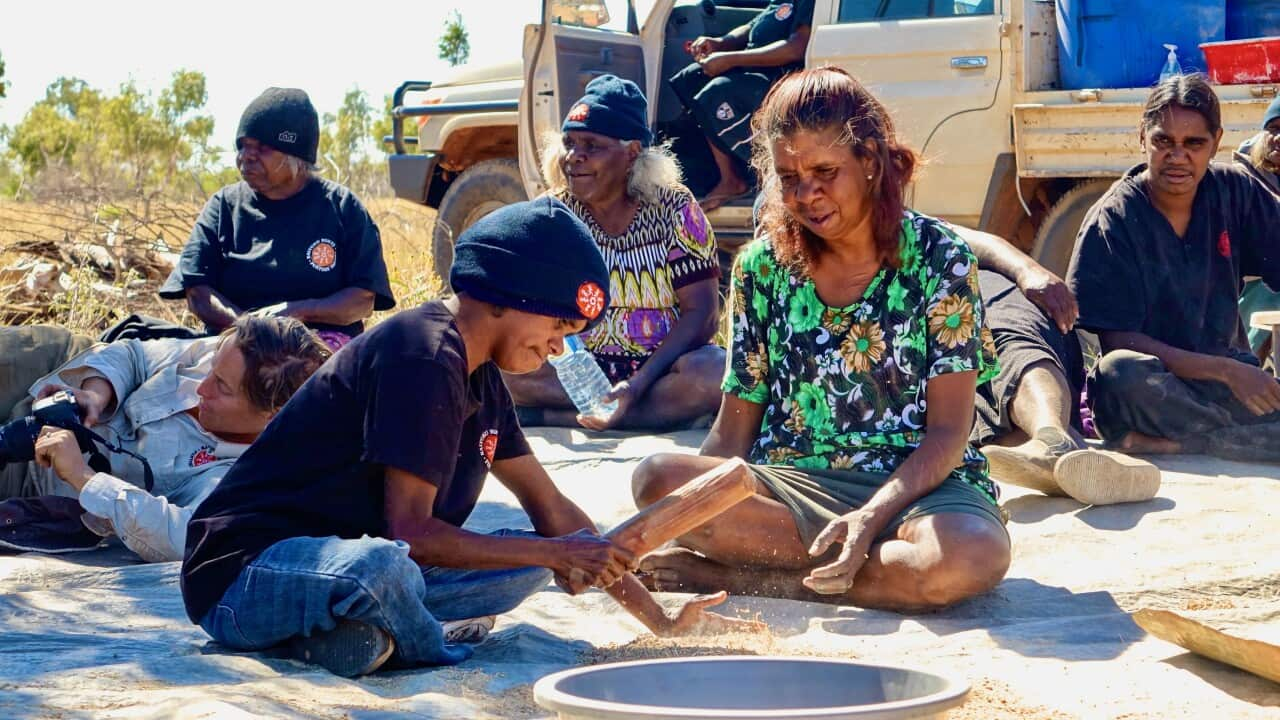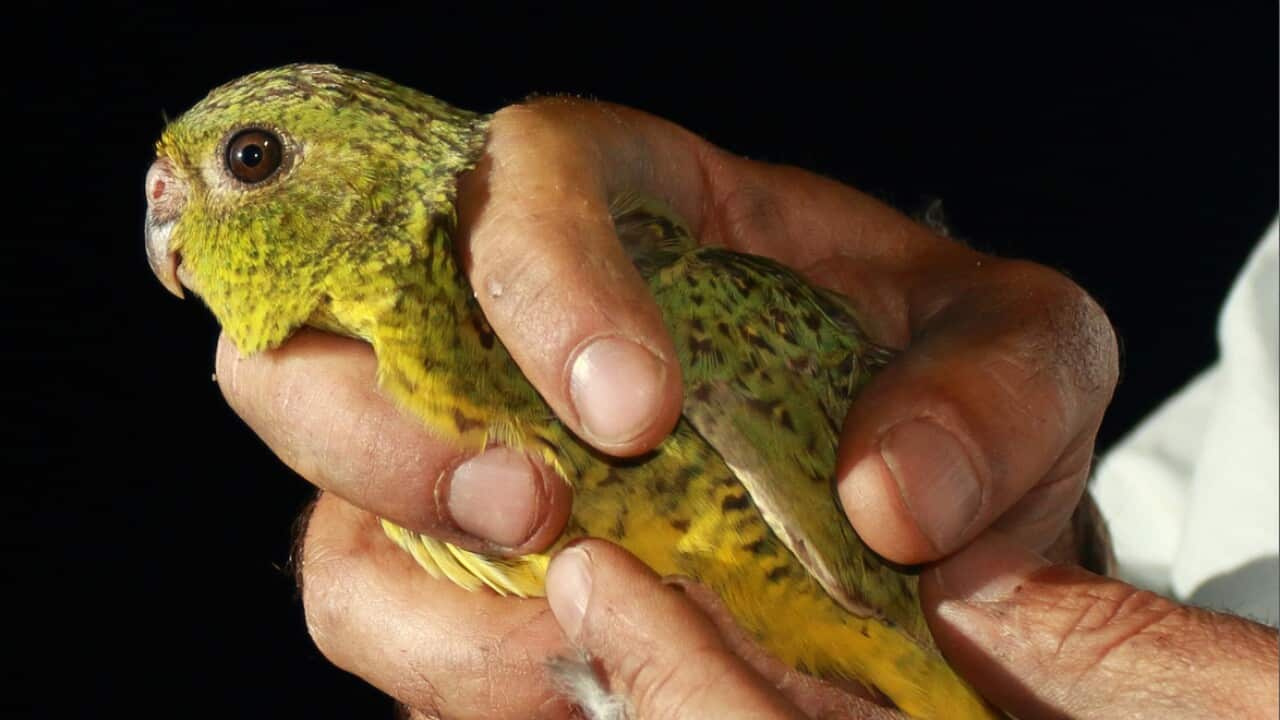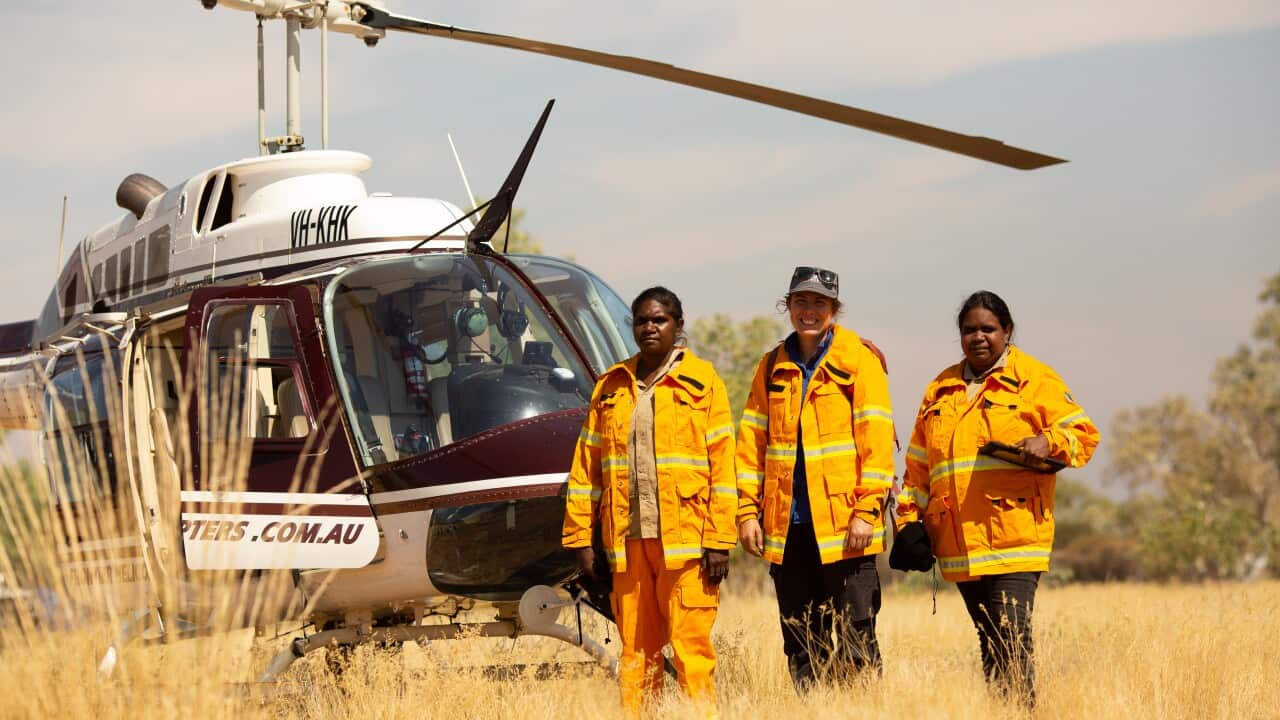

5 min read
Water in the desert: How two-way learning turned a fairy tale into an award-winning research project
A collaboration between Martu people through the organisation Kanyirninpa Jukurrpa and ethnoecologist Dr Fiona Walsh has changed how science understands linyji, also known as 'fairy circles'.
Published 18 October 2024 1:41pm
Updated 18 October 2024 3:45pm
By Rudi Maxwell
Source: NITV
Image: Carol Williams loves teaching the next generation knowledge shared with her by her grandmothers, Aunties and parents. (Kanyirninpa Jukurrpa)
The spinifex Country in the Eastern Pilbara is dotted with circular patches of red earth that Martu people know as linyji.
European eyes saw 'fairy circles', which were thought to be the result of competition between spinifex plants, according to research based on similar landscape features in Namibia, southern Africa.
But thanks to a deep collaboration between the Martu people through local organisation and non-Indigenous scientists this fairy tale has been myth-busted.
The collaboration also disproved the notion that Australia lacks climate and ecosystem data for desert regions and demonstrated when Indigenous knowledge is listened to it can lead Australian and international environmental research.
The Martu people know linyji to be the home of spinifex termites called Pilarrpa and Wartunyuma.

Linyji are the home of spinifex termites called Wartunyuma. Credit: Dave Wells
Guided by Kanyirninpa Jukurrpa and ethnoecologist , of the University of Western Australia, the groundbreaking project wove together traditional knowledge with environmental surveying and engineering methods.
As a result, shared understanding of the linyji termite pavements has revealed their foundational role in desert art, cultures and ecosystems.
The interdisciplinary and cross-cultural project has been hailed as a study that shows how to respectfully weave together Traditional Knowledge with western science, uplifting Aboriginal voices, expertise and communities.
And their work has been recognised with the Traditional Knowledge Innovation Award at the Australian Academy of Technological Sciences and Engineering’s annual national Awards, announced in Melbourne on Thursday night.

Dr Fiona Walsh and Carol Williams. Credit: Kanyirninpa Jukurrpa
"I've been with my Nana, when I started walking, talking and she taught me everything I know in the bush, and one of them is linyji ... " she told NITV.
"It's really important, because that's the thing that I was using for gathering seeds and making damper when I was living in the desert ...
"When Nana showed me the linyji I thought it was just a flat, hard ground, then since 2016 they found out things about it.
"They want to know the age of it and what makes it really hard - and I want to learn more in whitefella way."
For Dr Walsh, the project is more than two-way learning, it's about elevating Aboriginal voices - and like the circular shapes of the linyji themselves, bringing the story back to where it always was: in the stories, the art and the hearts of the people who know the desert Country the best.
"It's actually where the Aboriginal knowledge has been in front of the science and it's shifting a big international science debate about what causes the circular bare area and its patterns," she said.
The project reveals linyji’s foundational role as homes for termites and important water spots for people and desert ecosystems.

When it rains, pools of water form on linyji. Credit: Emma Stock
When it rains a ring of sand around the edge of the linyji forms a low edge, like a kid's paddling pool.
"[Mulyamiji] go and have their baby on top of the linyji when there's water on top of the linyji," Ms Williams explained.

Paintings by Martumili Artists tell deep and complex stories. Credit: Dr Fiona Walsh
"My grandfather was blind, but he'd draw on the ground," Ms Williams said.
"He used to draw a line and a circle.
"He was telling the story that he walked all the way from his country to Jigalong, and that's how my father knew where the place is, where my grandfather lived.
"He was mapping it out."

Linyji dot the landscape of the eastern Pilbara. Credit: Dave Wells
"What Martu and other people are saying we need to be listening," Dr Walsh said.
"That whole water story, knowing that there was water associated with termite pavements is completely new to desert ecology and it's Walmajarri and Martu and other people who've led that story ...
"Often, scientists might just have their own project and their own ideas and fill it in with Aboriginal people's knowledge of Country.
"But in this case, it's an example of how things can be done in an even deeper, longer way.
"We have a collaboration between Martu, Kanyirninpa Jukurrpa, zoologists and environmental engineers from the University of Western Australia, the Australian Wildlife Conservancy and independent scientists and volunteers."
And the happy ending of this 'fairy' tale is that everybody enjoys better science when Aboriginal voices and the deep knowledge they've held for generations are heard.
"As a scientist ... you get different questions from working collaboratively," Dr Walsh said.
"You get new information, and an approach that is collaborative and inclusive and participatory is much more fun.
"I feel like we're doing something that's actually about building relationships well over a long time with each other; that is what the real Australia could be, respectfully sharing and learning and having friendships that are more than just ephemeral or short-lived research relationships."




